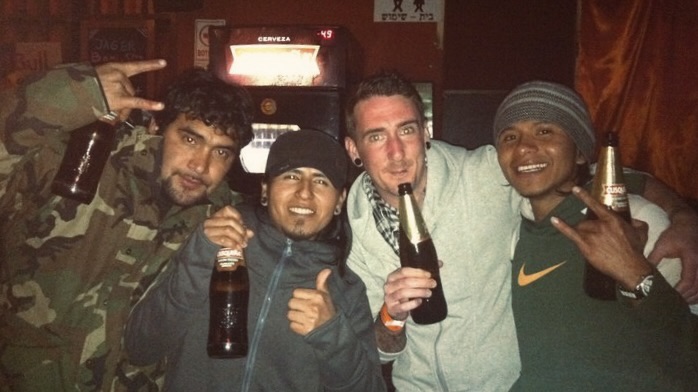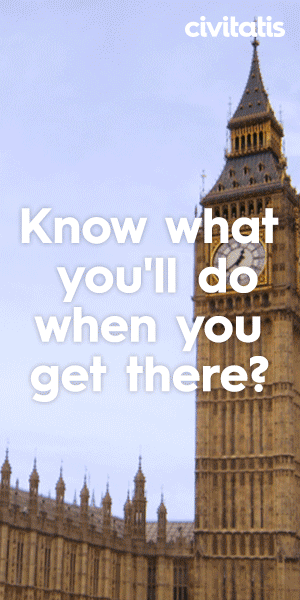Cusco is Peru’s gateway to Machu Picchu. It’s through Cusco that anyone traveling onwards to Aguas Calientes, in order to visit Machu Picchu, will pass. Yet, the UNESCO heritage listed city of Cusco is a major tourist destination in its own right.
I first arrived in Cusco Peru in late 2007, on my first trip to South America, when I was on the typical backpacker trail. Busing my way from Buenos Aires Argentina to Bogotá in Colombia. Yet, I’ve repeatedly returned to Cusco every few years, since 2007.
What I can say about the city, is that even though I’ve now spent over year in Cusco on all my trips combined, I still haven’t seen everything. Cusco has more historical sites of note than can possibly be highlighted in a single article. And though I keep returning and I’ve seen the city evolve over time, it really hasn’t changed.
Sure, there’s now a Starbucks, Macdonald’s and a KFC around the main Plaza de Armas, but the plaza still looks the same way it did, decades ago. Cusco truly is, a city locked in time. It’s a timeless city that takes time to explore.
You should allow yourself plenty of time to explore it, setting it firmly in your itinerary for Peru. Because, in this article, I barely scratch the surface, when it comes to things to see and do in Cusco, Peru!
Ultimate Travelers Guide To Cusco Peru
A Brief History Of Cusco Peru
Cusco in Peru, often spelled Cuzco, is a city steeped in history, renowned as the oldest continuously inhabited city in the Americas. Its origins date back over 3 millennia. And Cusco’s rich tapestry of culture and civilization, makes it a lynchpin of historical significance.
It was initially settled by the Marcavalle people. Yet, the region saw the rise and fall of various cultures, including the Chapanata and Qotakalli. However, it was the mighty Wari empire’s occupation in 750 A.D that established the city’s early urban fabric. A fabric which later became the foundation upon which the Incas would build their resplendent capital.
The Inca era, commencing around 1200 A.D, marked a golden age for Cusco. Transforming it into a pivotal political, administrative and religious hub of the Inca Empire. Masterful stone architecture, like that seen in the famous Sacsayhuamán fortress, and meticulously planned urban design reflected the Inca’s sophisticated societal structure and cosmology.
The city’s zenith was abruptly halted in 1533 with the Spanish conquest. Despite fierce resistance and subsequent rebellions, Cusco fell under Spanish dominion. Leading to a transformative period where colonial architecture was superimposed onto the Incan foundations. A cultural fusion that characterizes the city to this day. Cusco’s narrative, is one of resilience and rebirth.
As a UNESCO World Heritage Site, it is not only a testament to the ancient Inca civilization but also a vibrant example of cultural synthesis. Modern-day Cusco is a major tourist destination. It attracts visitors from all over the globe to witness its archaeological wonders and colonial charm.
Its history as the Inca capital and the impact of Spanish arrival, are woven into the very streets and buildings. Offering a living museum to those who walk its cobbled lanes. With a history that captures the imagination, Cusco remains a cornerstone of Peruvian identity. And it’s a must-visit destination for anyone looking to experience the heart of Inca heritage.

How To Get To Cusco Peru From Lima
When planning a trip to the enchanting city of Cusco, travelers have a variety of transportation options to consider. If you’re coming from the Peruvian capital, flying is the quickest and easiest way to get to Cusco. The flight from Lima takes about 1 hour and 45 minutes to cover the 584 km distance. However, it’s important to note that altitude sickness can be a concern when arriving by plane.
For those who prefer a more economical route, taking a bus is the cheapest option, although it’s a lengthy 23-hour ride. The bus allows passengers to take in the breathtaking landscapes and the rich cultural tapestry of Peru, along the way.
If you value flexibility and comfort, traveling by private car is a viable alternative, with an approximate travel time of 19 hours from Lima to Cusco. Although it’s a longer drive, it affords the opportunity to take a less direct route. And it allows you to stop at various attractions, such as the wineries in Ica and the mesmerizing Huacachina oasis.
It’s important to note that while there is no direct train service from Lima to Cusco, tourists seeking to visit iconic sites like Machu Picchu will often pass through Cusco as part of their journey. Numerous bus companies provide reliable transportation services, some of which include stops at tourist hotspots en route to Cusco.
If you take a bus route instead of air, It’s advisable to consider breaking up the trip. And allow yourself time to recuperate and explore intermediate destinations. Keep in mind that prices and schedules may vary depending on the travel provider and the time of year. So it’s wise to plan ahead to ensure a smooth journey to the historical heart of the Inca empire.
Travel Tip: I’ve taken the bus to Cusco from Lima, during my younger years when I was a backpacker. And it’s not something that I’d willingly do again, unless I was a younger backpacker looking to save money. I don’t recommend land routes for anybody, except the most adventurous backpackers.
Best Time To Visit Cusco Peru
The best time to visit Cusco is during the dry season, which spans from June to September. This period offers the most favorable weather conditions for outdoor activities, such as trekking the iconic Inca Trail or visiting the ancient citadel of Machu Picchu. Skies are typically clear, providing excellent opportunities for photography and sightseeing without the interruption of rain.
Additionally, the dry season coincides with several vibrant festivals, including the Inti Raymi Sun Festival in June and the religious celebrations of Corpus Christi and Virgen Del Carmen.
If you’re looking to avoid the peak tourist season while still enjoying good weather, the shoulder months of April, May, and October can offer a quieter experience with fewer crowds. These months provide a balance between pleasant weather and reduced foot traffic at major sites. However, visitors should be prepared for more unpredictable conditions, as these are transitional periods between the dry and wet seasons.
When planning your visit to Cusco, it’s also essential to consider the regional climate variations and the festival calendar. For instance, if you aim to experience local culture at its most vibrant, aligning your trip with festivity dates can offer a unique and unforgettable experience.
Just be sure to book accommodations and tours in advance, especially if you’re aiming to travel during the high season or around festival times. As the festivals do tend to draw large numbers of both international and domestic tourists. And the available tours, accommodation and passes to some sites, will book out in advance.
Note: During the ‘wet season’ you can almost set your watch to the rain. While you will experience the occasional unexpected torrential downpour, most days the rain will turn up in the evening. With the rain typically falling from sunset until about 10pm.

Must-Visit Places In Cusco Peru
Cusco, once the heart of the Inca Empire, is a treasure trove of historical and cultural riches, attracting visitors eager to explore its many wonders. At the top of the must-visit list is the legendary Machu Picchu.
The iconic 15th-century Inca citadel, Macchu Pichu, is perched atop a mountain ridge next to the nearby town of Aguas Calientes. This UNESCO World Heritage Site is not only an archaeological marvel, but also a testament to the Inca’s engineering prowess, offering panoramic views and a deep connection to Peru’s past.
Equally compelling is the Sacred Valley, or the Valle Sagrado, which is dotted with ancient ruins, traditional markets and quaint villages. Highlights include the agricultural terraces of Moray, believed to be an Inca laboratory for crops, and the salt evaporation ponds of Maras.
Moreover, the city of Cusco itself is home to a wealth of attractions, such as the Plaza de Armas, the central hub of the city, and the ornate Cusco Cathedral, a splendid example of colonial architecture atop Inca foundations. Other key sites include the Temple of the Sun (Qoricancha) and the fortress of Sacsayhuamán, known for its massive stone walls.
Here’s a list of the must-visit places in and around Cusco:
- Machu Picchu
- Sacred Valley
- Moray
- Maras
- Plaza de Armas
- Cusco Cathedral
- Qoricancha (Temple of the Sun)
- Sacsayhuamán
These attractions represent just a slice of the vibrant culture, history and natural beauty, that Cusco has to offer. Yet, these must-visit tourist attractions in Cusco, will leave a lasting impression. Remember to respect the local customs and preserve the integrity of these historical sites for future generations to cherish.
Travel Tip: Choosing the right footwear to take with you to Cusco is critically important. You will, even in the main Plaza de Armas, encounter uneven and slippery cobblestones. Pack comfortable, thick soled shoes with a lot of grip. And if you have a larger shoe size, don’t expect to easily buy new shoes in Cusco if you pack the wrong ones.
Foods You Must Try In Cusco Peru
Peruvian food is a tapestry of flavors that is sure to tantalize the taste buds of food enthusiasts from around the world. The city is not only a gateway to the architectural wonders of the ancient Inca world, but also a hub for gastronomic adventures. As you stroll through the bustling food markets of Cusco, prepare to encounter a dizzying array of fresh produce, aromatic spices and street food vendors, all offering local specialties.
Begin your culinary exploration with a visit to San Pedro Market, a vibrant epicenter of local commerce where the sights, sounds and smells, create an unforgettable atmosphere. Here, you can sample traditional Peruvian dishes such as the world-renowned ceviche, a refreshing seafood dish marinated in lime juice, or dive into a hearty serving of Lomo Saltado (my favorite), a savory stir-fry that perfectly encapsulates the fusion of Peruvian and international flavors.
Don’t miss the chance to taste indigenous ingredients like quinoa, which has been a staple in the Andean diet for centuries, and the myriad varieties of native potatoes, each with its unique flavor and texture.
For a unique dining experience, seek out one of the city’s top-rated restaurants that specialize in contemporary Andean cuisine. Where you’ll find that local chefs are transforming traditional recipes into gourmet masterpieces, showcasing the versatility and richness of Cusco’s culinary heritage.
Whether you’re savoring a simple yet delicious street food snack, or indulging in a fine dining experience, the flavors of Cusco are sure to leave a lasting impression on your palate and provide a deeper connection to the cultural wonders of this historic city.
Travel Tip: Avoid the ‘Millionaires Pizza’ in Cusco. Particularly if you don’t like your food watching you, while you eat it.
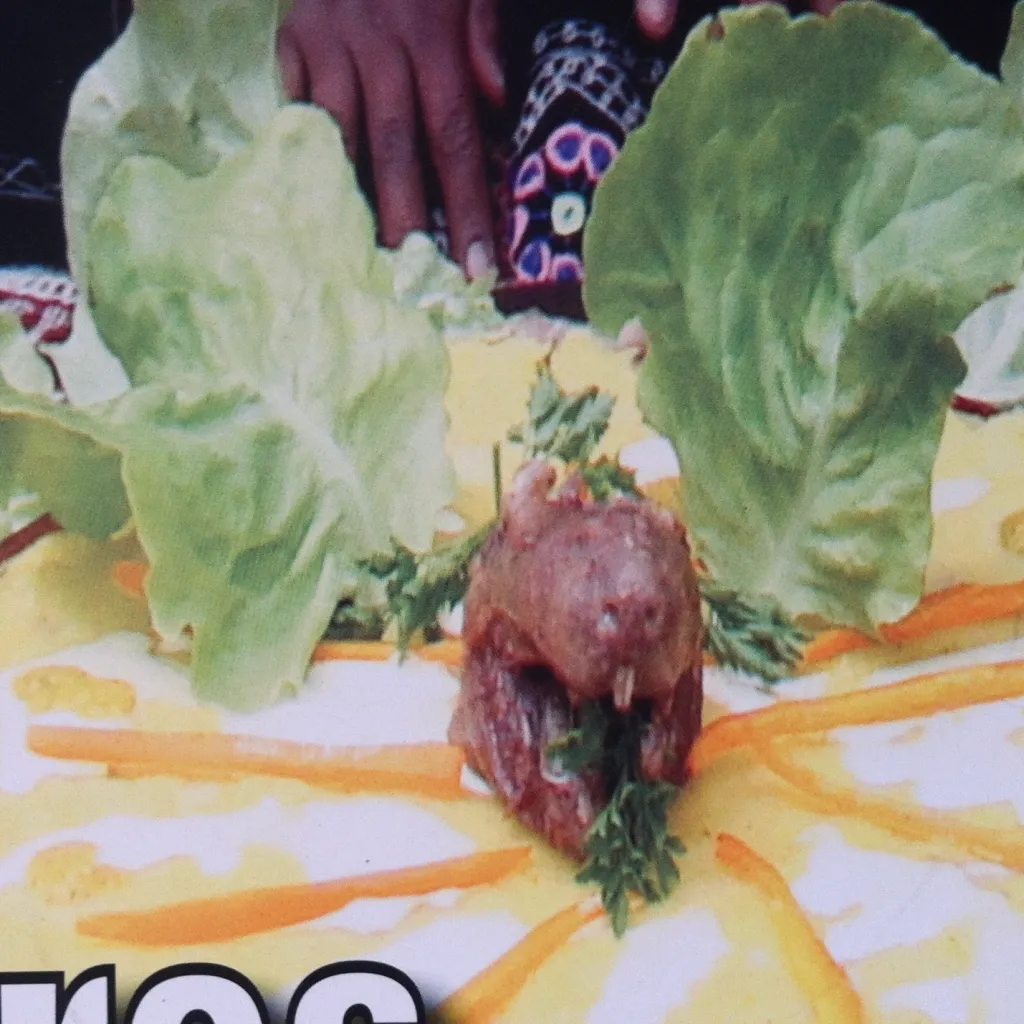
Cultural Experiences In Cusco Peru
One of the most captivating aspects of Cusco’s culture, is its calendar of festivals. Inti Raymi, the festival of the sun god, is a mesmerizing event that recreates Inca rituals and features colorful processions.
Visitors can also witness the fusion of Inca and Catholic traditions, during the Qoyllur Rit’i pilgrimage and the Corpus Christi celebrations. Both of which offer a profound glimpse into the religious and cultural practices of the region.
For those seeking a spiritual connection, Cusco’s traditional mystic rituals like Ayahuasca and San Pedro ceremonies, provide deep insights into Andean-Inca spirituality. These ceremonial practices are held in high regard due to their therapeutic potential. And they are legally conducted at various retreat centers in Cusco City and the Sacred Valley.
Participating in an Ayahuasca and San Pedro ceremony can offer a transformative experience. Allowing a deeper understanding of local customs and an opportunity to partake in the spiritual traditions that have been part of the region’s identity for centuries.
As a hub of cultural experiences, Cusco seamlessly blends historical traditions with contemporary practices, ensuring that every visitor has the chance to engage with the past, while enjoying the city’s modern-day vibrancy. From its religious processions and historical festivals to its mystical rituals, Cusco provides an unparalleled cultural journey that is as enriching as it is unforgettable.
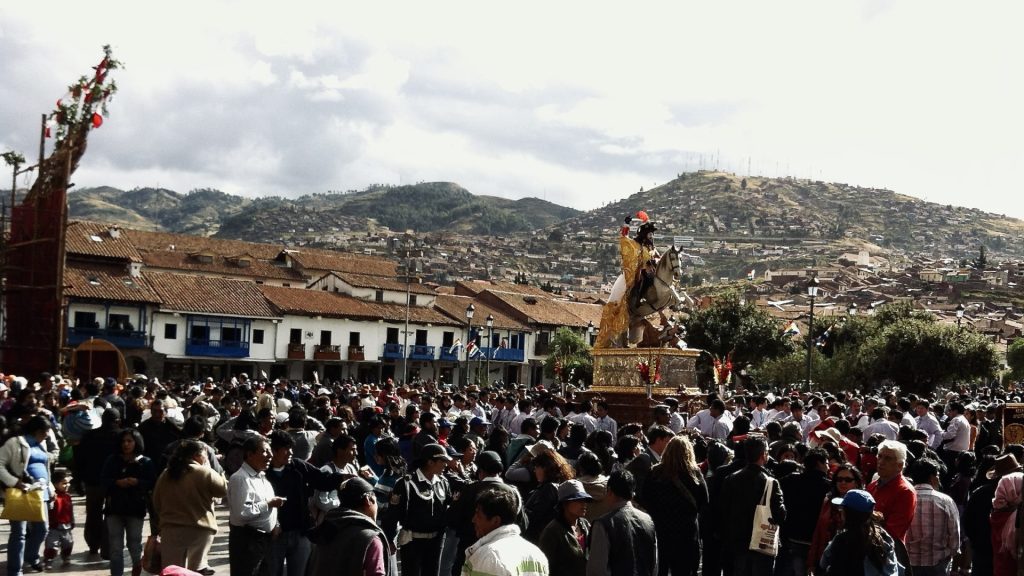
Travel Tips For Cusco Peru
Visiting Cusco is an adventure of a lifetime. To make the most of your trip, here are 9 essential travel tips for navigating the city and acclimatizing to its high altitude:
- Acclimatize to Altitude: Cusco sits at about 3,400 meters (11,200 feet) above sea level. To prevent altitude sickness, consider spending a day or two acclimatizing. Stay hydrated, avoid alcohol and heavy meals, and consider coca tea, a local remedy.
- Sun Protection: With its high elevation, the sun in Cusco is particularly strong. Pack and regularly apply high-SPF sunscreen, wear a wide-brimmed hat, and use sunglasses to protect your eyes.
- Dress in Layers: The weather can change quickly, from sunny and warm to cold and rainy. Dressing in layers allows you to adjust to varying temperatures throughout the day.
- Stay Hydrated: The high altitude can lead to dehydration. Drink plenty of water and avoid excessive caffeine.
- Use Local Currency: While some places accept dollars, it’s best to carry Peruvian soles for small purchases and to get better prices. And use a Wise Debit Card for larger purchases and for paying in restaurants.
- Respect Local Culture: Engage with local traditions and respect cultural sites. Always ask permission before photographing people. And be aware that they will likely ask for money around the Plaza.
- Travel Insurance: Ensure you have travel insurance that covers high-altitude activities. I get my own insurance from visitorscoverage.com.
- Safety First: While Cusco is generally safe, be aware of your surroundings and keep valuables secure. There are always pickpockets lurking in tightly packed crowds in Cusco. Particularly during festivities.
- Soroche Pills: These pills can help alleviate altitude sickness symptoms and are available in local pharmacies.
By following these travel tips for Cusco, you’ll enhance your experience in this beautiful city, while staying healthy and safe. Enjoy your journey through the gateway to the Incan world!
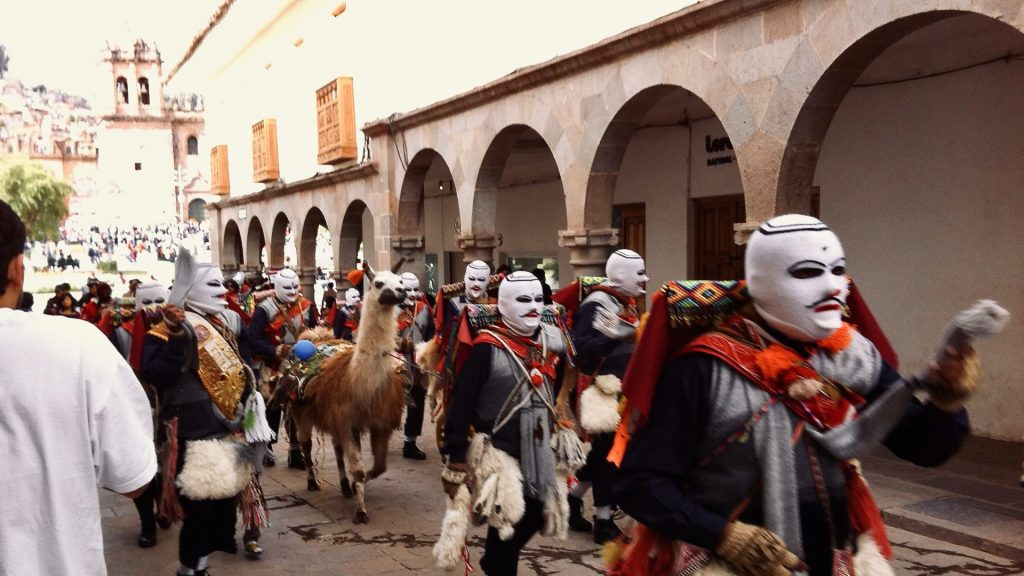
Accommodation Options In Cusco Peru
Cusco offers a diverse range of accommodation options to suit all preferences and budgets, from the budget-conscious backpacker to the luxury-seeking traveler.
- Budget Accommodations: For those traveling on a tight budget, Cusco is home to an array of hostels and guesthouses, particularly in the San Blas neighborhood. These establishments often provide communal areas, where travelers can exchange stories and tips. They feature basic amenities at very affordable rates. Many hostels also offer free breakfast and Wi-Fi, making them an excellent choice for those looking to save money without sacrificing convenience.
- Mid-Range Hotels: The area around the Plaza de Armas is a hub for mid-range hotels, offering comfortable accommodations with a touch of local flavor. These hotels frequently include additional comforts such as en-suite bathrooms, on-site dining, and travel services to help arrange tours and transportation.
- Luxury Hotels and Resorts: For a more luxurious stay, there are several high-end hotels and boutique accommodations located in the historic center and the surrounding hills. These establishments provide top-notch amenities, including spa services, gourmet restaurants, and panoramic views of the city and the landscape beyond. Some luxury hotels are even housed in colonial buildings, providing a rich atmosphere steeped in history.
- Apartments and Vacation Rentals: Visitors planning longer stays or seeking a home-away-from-home experience can opt for apartments or vacation rentals. These are available on Airbnb throughout Cusco and they offer the convenience of self-catering facilities.
Areas to Stay: The Centro Historico, or historical center, is the most popular area to stay for first-time visitors. This is due to its proximity to major attractions and a plethora of dining and shopping options, plus it’s in a more level area negating the need to traverse hills and stairs. However, for a quieter stay, neighborhoods such as San Blas or others away from the center, offer a more relaxed atmosphere.
Yet, regardless of where you choose to stay, it is advisable to book accommodation well in advance, to secure the best rates and availability. Particularly if you’ll be visiting during peak tourist seasons and festivals.
When selecting your lodging in Cusco, consider not only your budget. But also the type of experience you wish to have in this enchanting city. Whether you’re after the vibrancy of the city center or the tranquility of the outskirts, Cusco’s range of accommodation options promises a memorable stay for every type of traveler.
Travel Tip: I prefer single rooms in the hostels located around the Plaza de Armas. Because the area is easily walkable. The last thing you want if you go the Airbnb route, is to find out that your rental is only accessible by a huge staircase.
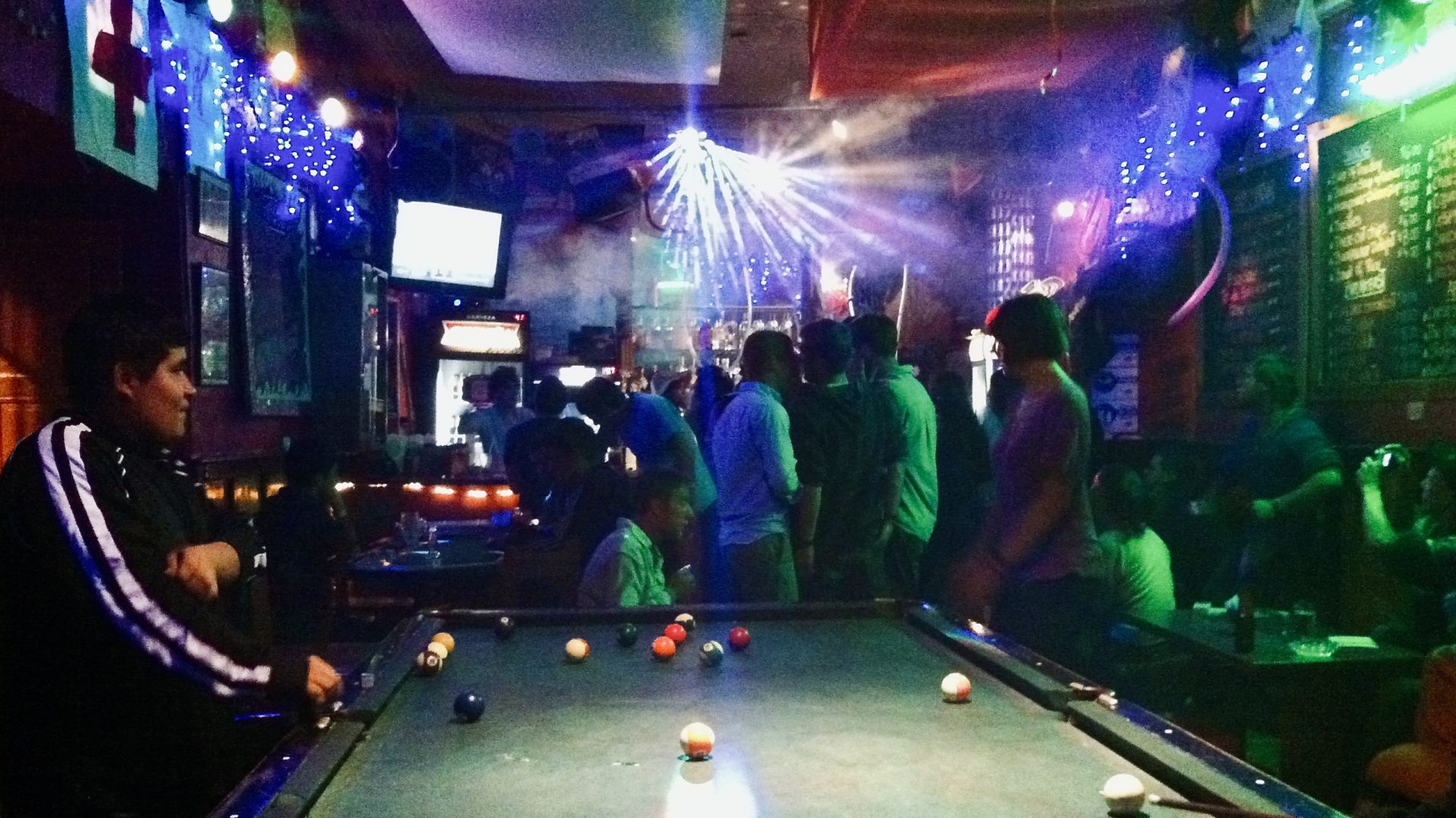

Money And Payment In Peru
As a seasoned traveler exploring the vibrant landscapes of Peru, I’ve learned that having convenient and secure payment options is as crucial as packing the right gear. While the Peruvian Sol (PEN) is the official currency, I’ve found that carrying a mix of cash and card is the best approach.
For card payments, my go-to has been the Wise Travel Debit Card. Its tap-and-go feature makes transactions swift and hassle-free, allowing me to savor the local cuisine or pick up unique handicrafts without fumbling for cash. I’ve used my Wise Travel Debit Card across bustling markets in Lima, cozy cafes in Arequipa, and even at remote vendors near the mystical Machu Picchu.
The Wise Debit Card’s favorable exchange rates and low transaction fees mean I get more out of my money, which is essential when I’m on a quest to experience all that Peru offers. Plus, the added security of card payments gives me peace of mind, especially when large cash amounts might pose a risk.
For anyone planning a Peruvian adventure, I’d recommend ordering a Wise Travel Debit Card before departure. It’s been an indispensable part of my own travel wallet, ensuring that I’m ready for any purchase, from a spontaneous Pisco Sour to recharging my mobile data so I can upload more pictures to Instagram. And with tap-and-go payments, I’m not just navigating Peru with ease; I’m doing it with the best possible exchange rate and no hidden currency conversion fees.
The 5 Best Things To Do In Cusco Peru
As an avid traveler who’s been captivated by the charm of Cusco, I can confidently share that this city is a treasure trove of cultural, historical and adventure activities. Cusco truly is a destination filled with wonders in its own right. And it’s definitely not just a stop on the way to Machu Picchu.
One of my own favorite things to do is to explore the cobblestone streets of the San Blas neighborhood, where the blend of Incan and Spanish colonial architecture creates a captivating backdrop for the bustling artisan workshops and bohemian cafes.
The top 5 best things to do in Cusco, Peru, from my unforgettable experiences, are:
- Visiting the awe-inspiring Sacsayhuamán fortress, with its colossal stone walls
- Wandering through the historic Plaza de Armas, soaking in the vibrant atmosphere
- Exploring the Sacred Valley of the Incas, including the market at Pisac and the terraces of Ollantaytambo
- Experiencing the colorful San Pedro Market, a feast for the senses
- Taking part in a cocktail making course to learn how to make a traditional Peruvian ‘Pisco Sour’
Each of these activities offers a unique glimpse into the soul of Cusco, from its ancient roots to its modern-day zest. Whether I’m marveling at the intricate stonework of ancient ruins or tantalizing my taste buds with local delicacies, Cusco never fails to surprise me.
It’s a city where every corner tells a story, and every experience is steeped in rich tradition. And it’s waiting to be discovered by those eager to immerse themselves in its enduring legacy.
Visiting Machu Picchu From Cusco Peru
As someone who had long dreamed of standing amidst the ancient Incan ruins, the journey from Cusco to Machu Picchu was an experience that’s now firmly etched in my memory. For travelers like myself who prefer convenience and ease, an organized day trip to Machu Picchu is the simplest way to navigate this once-in-a-lifetime adventure.
Day trips to Machu Picchu often include transportation, admission tickets, and a knowledgeable guide to bring the history of this UNESCO World Heritage Site to life. From the moment I boarded the train in Cusco, I could relax and soak in the scenic vistas, knowing that all the details were taken care of. While the day trip is the most straightforward option, it’s worth noting that the path to Machu Picchu isn’t one-size-fits-all.
For those with an adventurous spirit, there are alternative routes such as the classic Inca Trail, the Salkantay Trek, or you can even make your own way out to Aguas Calientes via a combination of bus, taxi and hike. And in fact, the first time I visited the site almost two decades ago, we did take a bus to Santa Maria, followed by a cab to the old train line, where we hiked along this historic route into Aguas Calientes.
Each path to Aguas Calientes, the gateway to Machu Picchu, offers it’s own unique views and experiences. Each method of reaching the iconic ruins has its charm, but for those short on time or who prefer a more direct approach, an organized day trip from Cusco remains the easiest method to witness the majesty of Machu Picchu, leaving you free to ponder the mysteries of the Incas without the hassle of planning and logistics.
Travel Tip: If you are going to use the ancient stairs from Aguas Calientes to the entrance of Machu Picchu, be warned, they’re hard going. It’s a better idea to take the bus up and come down by stairs. If you take the stairs up, you will need to take them back down. But you have the option to take the stairs down, if you take the bus up.
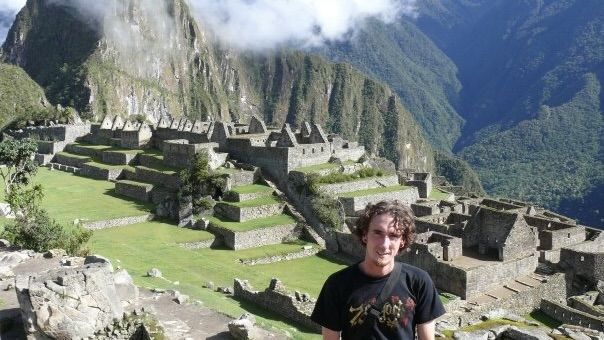
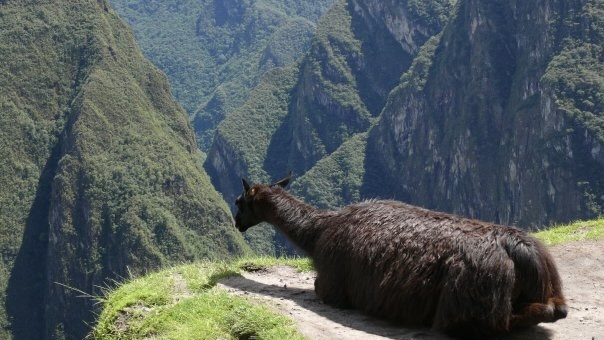
My Favorite Cusco Peru Travel Blog!
So, this isn’t my usual type of post. But I’ve recently convinced a close friend of mine Diego, to start his own travel blog and to share his expertise when it comes to Cusco, Peru.
I’m making this post because I want to show Diego some love. And hopefully in the process I’ll help you, my readers, get better advice when it comes to traveling in Peru.
How Did I Meet Diego In Cusco Peru?
I’ve known Diego for over a decade (I feel old saying that). Having first met him when he was hanging around my then favorite hostel in Cusco Peru.
It was in that hostel I shall not mention, run by a fellow Australian named ‘Ben’, that I met Diego one fateful day sometime back in 2011. And it was on that day that Diego forever earned his nickname, the ‘panda‘. You know the one, it’s from South Park.
Now, back then Cusco and that particular hostel was one wild place to visit. Cusco was and still is a city that doesn’t sleep. But over the last couple of decades, Cusco has toned itself down somewhat.
Back then, Cusco was a place where it wasn’t uncommon to find random drunks in wedding dresses dancing on bars at 2am. Or to buy someone so many Jägerbombs, that they’d wake up on a bar floor wearing nothing but a wedding dress, with both their nipples pierced or a tattoo on their face.
Just ask Diego. I got him more than once.

It’s okay though. I made it up to Diego by persuading him to come and study at a university in Australia. And he earned his double degree at my own alma-mater, Griffith University on Australia’s Gold Coast.
Using the skills he learnt as a master bartender in Cusco’s hottest nightclub, Mama Africa; Diego worked as a bartender on the Gold Coast in Australia, while he studied. And he even spent the first year of his degree, renting a room from one of my ex girlfriends. I feel sorry for him there.
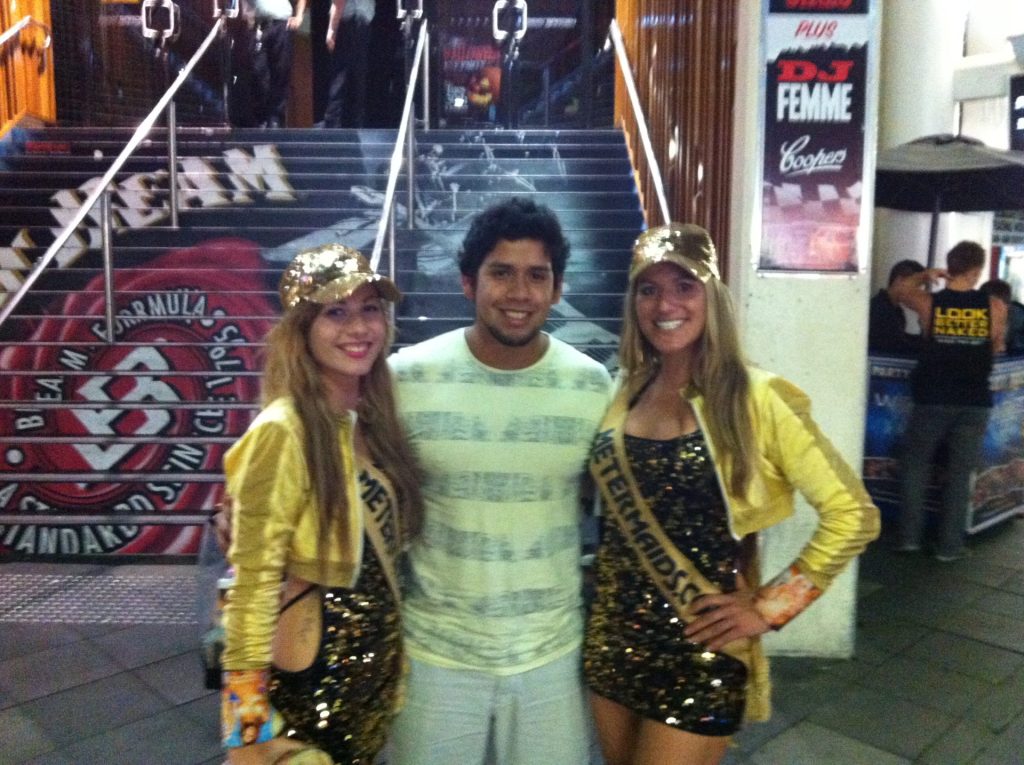
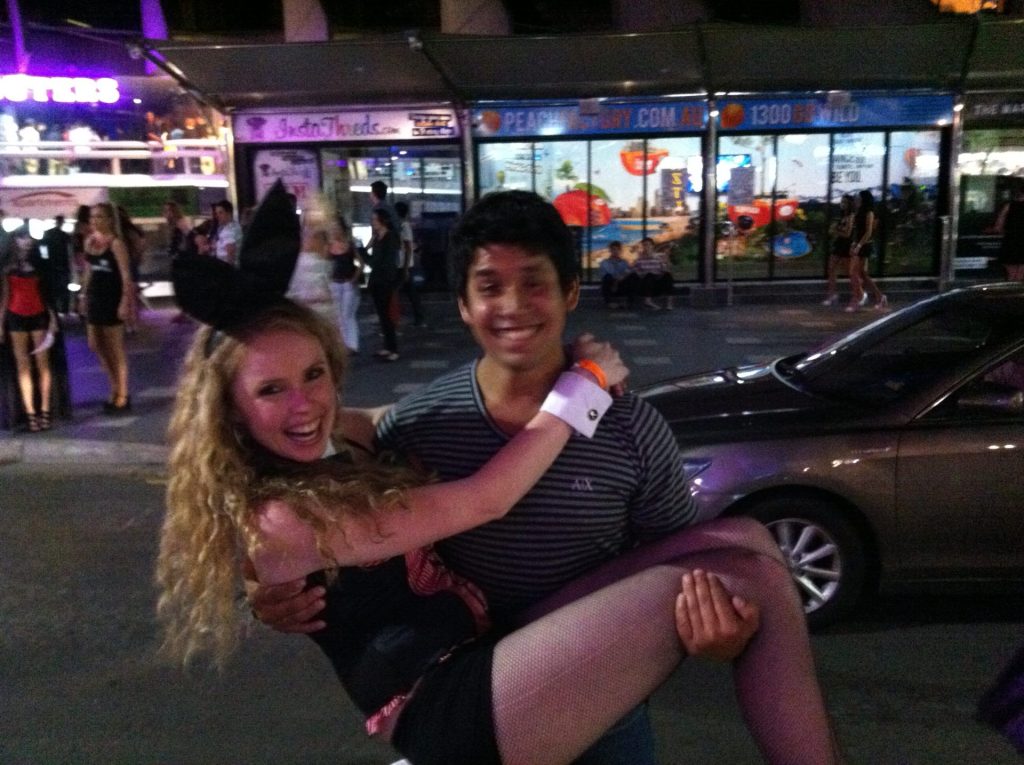
Diego would still be in Australia if the global shut down hadn’t coincided with him finishing his Australian studies. After graduating, he needed to change his visa. And the Australian Government, being as useless as they are, made him leave the country.
Yet, in someways, Diego’s loss is your gain. Because, he went back to his roots in Cusco. Working as a tour guide with our mutual friend Marco, the owner of Cusco’s most popular tourism company.
What’s Diego Doing Now?
With a Swedish father and a Peruvian mother, Diego speaks a lot of languages and loves to travel. So, like me, he’s always out and about exploring the world.
He’s already a digital nomad of sorts. It’s only the blogging thing he’s new too. But he’ll get a handle on it. And you should head over to his website justcruisingaround.com and bookmark it. It’ll be updated near daily and continually get better as he gets a handle on this thing called travel blogging.
On Diego’s website, you’ll learn all about Cusco in particular and Peru in general. You can also send him a message or drop a comment, if there’s something you want to know about Peru from a local. As a Peruvian with extensive experience in the tourism and hospitality sector in Peru, I can guarantee Diego will be able to provide the kind of advice that you’ll need, when planning a holiday in Peru.
Like my own endeavors on this website, Diego’s aiming to share his experience in order to help save people time, stress and money when traveling abroad.
Why Follow Diego When Planning A Trip To Cusco?
Well, to start with, he could save you from waking up on a bar floor in a wedding dress with both your nipples pierced and a tattoo on your face. He could also provide invaluable travel and dating advice for the single lads, because he is the ‘the panda’ and he does travel a lot.
But all jokes aside, as a native Peruvian and a polyglot (someone who speaks several languages), he can provide some of the best travel advice you’ll get on the topic of Peru. And he can likely give you that advice, in your native language.
Sharing his own experience of Peru as a native Peruvian, who knows his country better than most, he’ll give you the lowdown on where to go, how to travel and what to do or not do in Peru. Diego’s also currently working as a medical translator for a travel insurance company. So, he knows how to get you out of trouble should you find yourself banged up abroad, after too many Jägerbombs in Cusco.
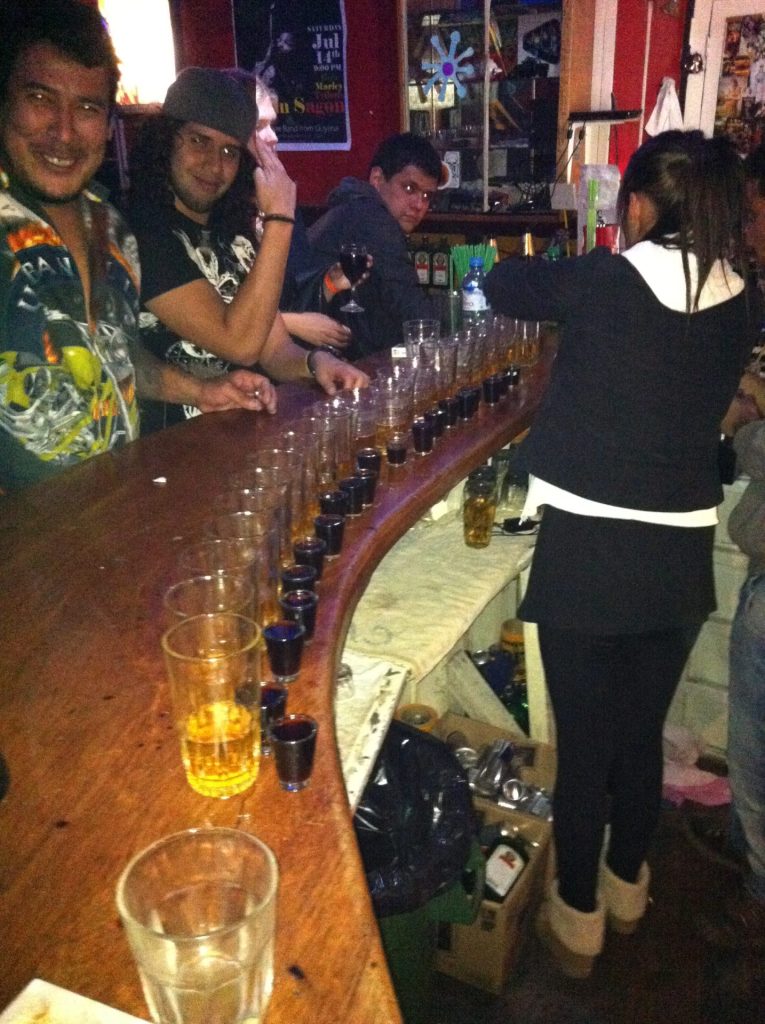
Yet, after those Jägerbombs if you do want a tattoo, he can also introduce you to my own tattooists. My tattooists own and operate Willka Tattoo in Cusco. Just don’t try to get them to paint your face. They’re fantastic tattooists, but face-painting isn’t their forte.

What Makes Diego’s Advice Better Than Other Bloggers On Cusco?
Like I’ve said, Diego is a native Peruvian and he has lived, worked and partied in Cusco Peru for decades. He can reveal all the secret spots that tourists never see. The kind of spots that other people writing about Cusco, have never even heard of.
He can also help you get into or out of trouble. Depending on your desire for adventure. Whether you want to find an ice-cold olympic sized swimming pool, soccer fields high up in the Andes or you want to bake some potatoes in the hills like a local on Sundays, Diego’s got the good travel tips.
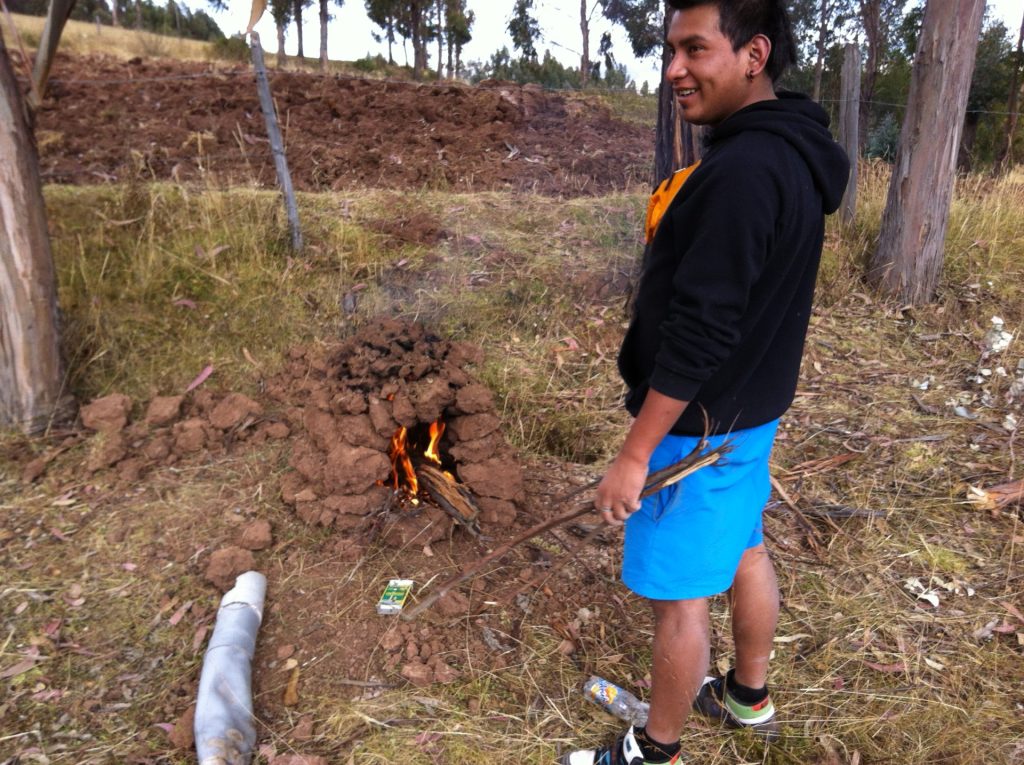

So, why not head over to Diego’s website justcruisingaround.com and show Diego some love. You’ll learn more about Cusco Peru and life high up in the Andes from Diego, than you would from any other website. But ladies, just don’t get too close. His nickname is ‘the panda‘ and it’s for good reason.
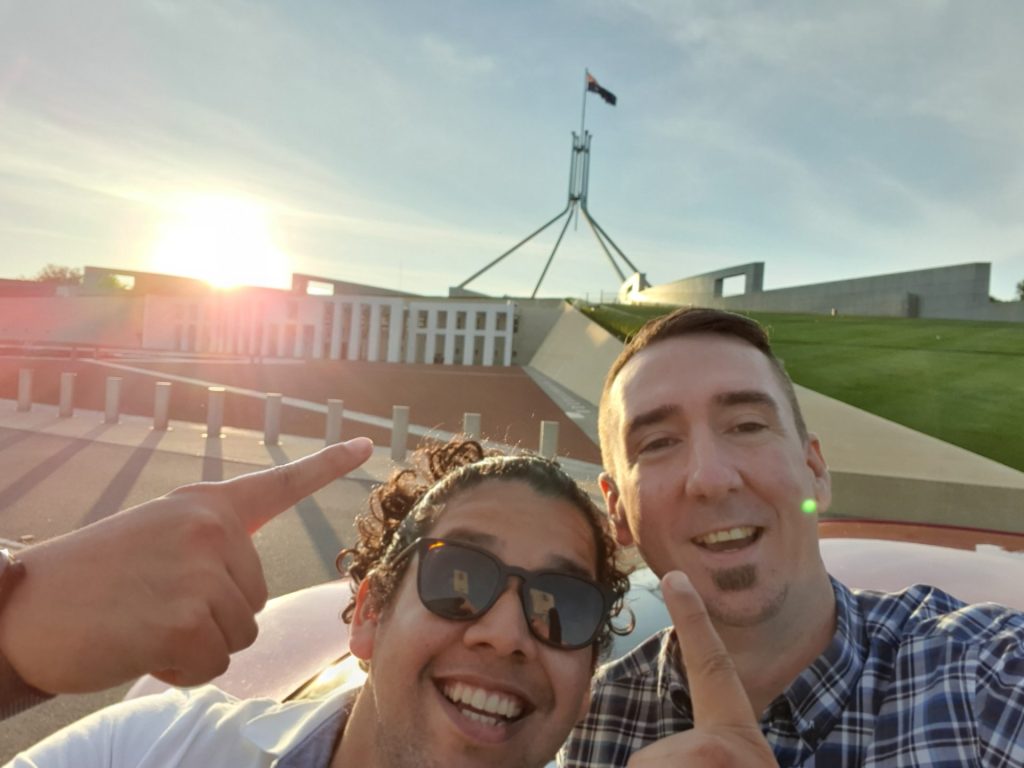
Cusco Peru Frequently Asked Questions
Should I get a tattoo in Cusco?
It’s up to you, but I will say that Cusco has some amazingly talented tattoo artists. The tattooist I’ve used for almost 2 decades now, is from Cusco. And Cusco was where I met him.
If you want to know more about tattoos in Peru, including where to go, I’d suggest reading my articles on Tattoo Vagabond.
I was interviewed on NBC by Melody Mendez about tattoo tourism. And a large part of my live TV discussion with Melody was about tattoos in Peru, as she is of Peruvian heritage. You can see the interview below or on NBC.
Can I take my vape to Peru and can I buy vapes in Cusco?
Vaping is legal in Peru. It’s treated the same as smoking. And there are dedicated vape stores in Cusco that sell vapes and vaping products. Sometimes, you can also buy them on apps like Rappi.
Can I try ayahuasca in Cusco?
There are many tourist experiences available in Cusco that offer ayahuasca rituals. And there are dedicated ayahuasca retreats.
Is Cusco safe to visit?
The historic center and all of the tourist sites around Cusco are incredibly safe to visit. Aside from the minor annoyance of pickpockets, tourists won’t experience crime. With that said, the city does become more rowdy during major festivities like Inti Raymi.
How long do I need to visit Cusco Peru?
Average Vacationer: For the average American or European vacationer visiting Cusco, around 7 days allows ample time to properly explore Cusco and visit it’s main surrounding attractions like Machu Picchu and the Sacred Valley.
Backpackers: Aim to stay in Cusco for 1-3 months. Now, that might seem like a long time. But Cusco is one of the main party destinations in South America. And trust me, with the historical sites available and the party atmosphere, you’ll spend longer in Cusco than you’ll plan for.
For those staying longer in Cusco, all of the major hostels offer work to backpackers. In exchange, they provide for lodging, food and often, cash payment. There are also many language institutes in and around Cusco, that are always looking for staff.
What’s the best travel money card for electronic payments in Peru?
I was using a Citibank multi currency card, but I’ve switched to a Wise Debit Card. I believe Wise is the best travel debit card for all of South America. With the exception of Argentina, because you should never use a bank card in Argentina.
I need to ask a question about traveling to Cusco, who should I ask?
What is the best Cusco travel guide or blog?
I believe everyone should read Diego’s website ‘Just Cruising Around‘ before traveling to Cusco. It’s the best resources for travelers headed to Cusco. And its author, Diego Rios, has lived and worked in Cusco for decades.
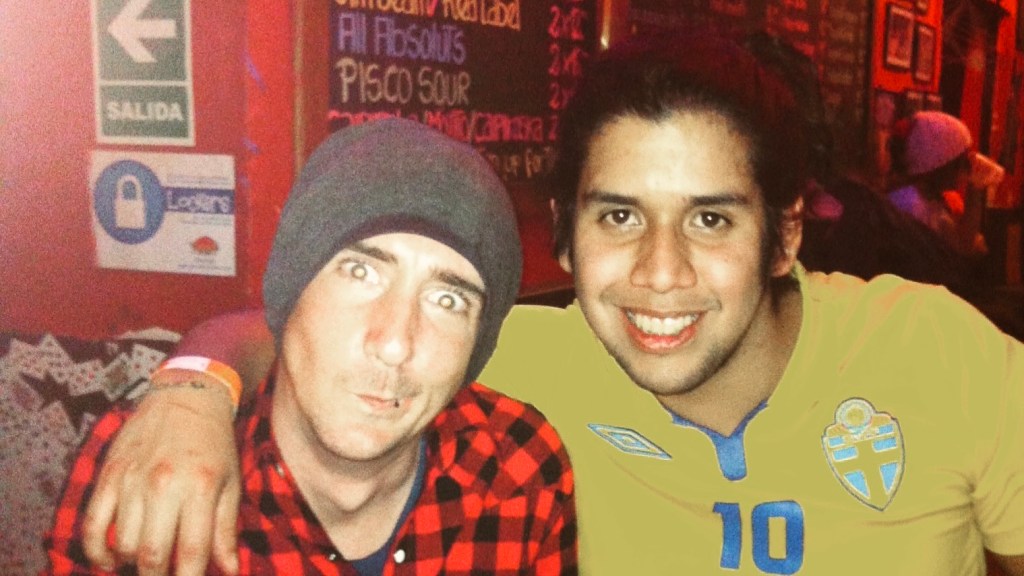
My Conclusion And Why I Keep Returning To Cusco!
Since that fateful afternoon in December 2007, when I first arrived by bus as young backpacker on the ‘gringo trail’ through South America, I’ve been constantly drawn back to Cusco. Both as a result of lifelong friendships made and the experience I’ve had, but also, those experiences that I’m yet to have. Cusco has so much to offer the avid traveler who wants to go beyond Machu Picchu, that it’s hard not to be drawn back.
While a week in Cusco is about the right length of time for the average vacationer to hit the big ticket items, like Machu Picchu, the Sacred Valley and the town itself; there’s so much more to see and do, that you could spend more than 12 months in Cusco and still not see everything. Like I have.
The art, culture and history on display in Cusco is something that will stick with you, long after you visit. And it’s what keeps drawing me back. Each time I visit, I discover something new. And it’s why, beginning in 2024 when I’ve set up my home base in Bogota, that I’ll be returning once again. But this time, I’ll be taking my professional camera equipment and trying to film everything, with Diego.
So stay tuned, there’s big Cusco updates coming in 2024!
